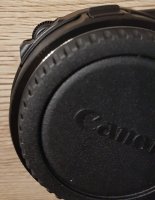September 16, 2020 – San Francisco, California – Breakthrough Filters today introduced an all-new EF to RF filter adapter, making it the first non-Canon EF to RF drop-in filter adapter. The new EF to RF Drop-In Filter Adapter will start shipping on November 16th and is available for pre-order here.
The all-new EF to RF Drop-In Filter Adapter delivers a number of new hardware improvements including Autofocus, Image Stabilization, full EXIF support, all-metal construction, dust, and water-resistant weather-sealing, and a detachable tripod foot for mounting to ballheads, arca plates and other mounts.
Breakthrough Filters is selling the new drop-in filter adapter for $199, and the first 500 units ordered will receive an X4 Clear for free.
Breakthrough Filters is also doing a buyback for the standard Canon EF to RF adapter ($69) as well as the Canon Drop-In filter adapter ($149) with details on their website about how this works.
For more information...
Continue reading...


